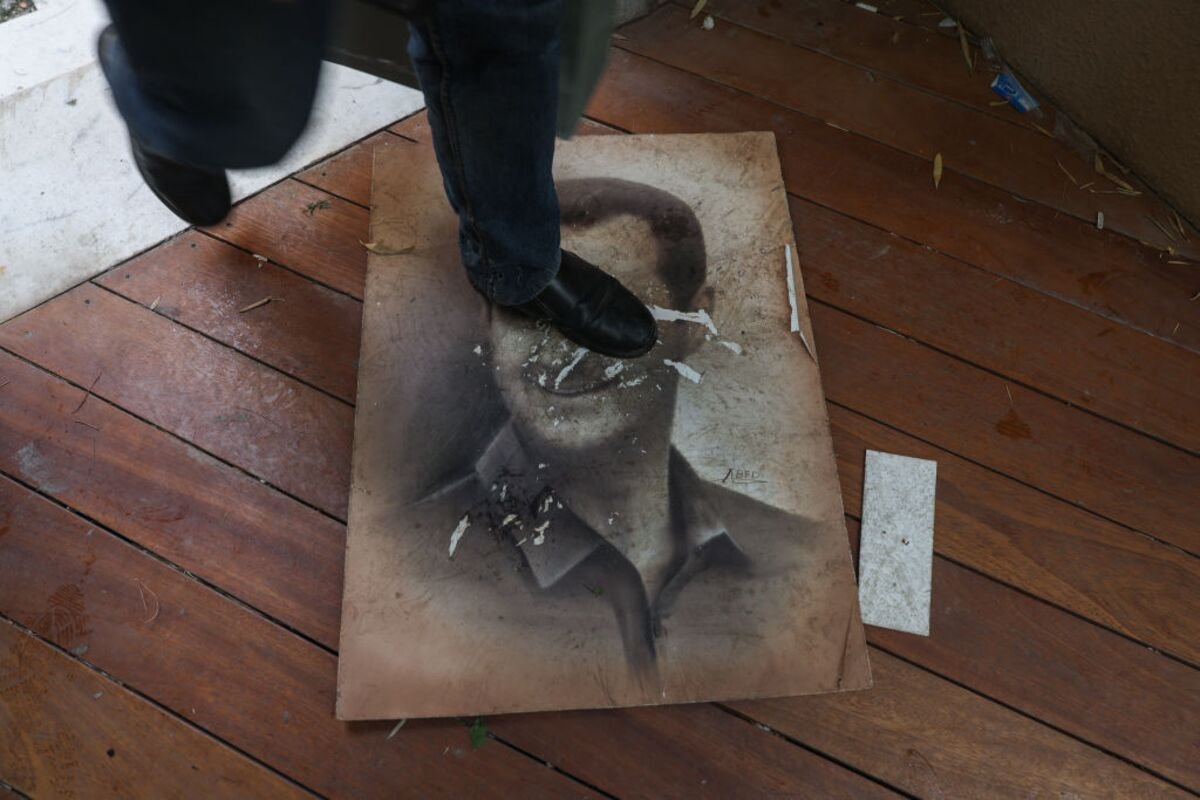To say we have no idea how events in Syria will turn out after President Bashar al-Assad’s flight to Moscow is an understatement. Even so, it’s worth celebrating the near miracle that this brutal 13-year-old conflict has even a chance of ending without a bloodbath of vengeance.
As we wait for Hayat Tahrir Al-Sham (HTS), who’ve taken over in the capital Damascus, and the armed Sunni, Alawite, Druze and Kurdish factions that hold other parts of the country to show their true colors and intentions, it’s worth pointing out a few of the more extraordinary aspects of Assad’s recent end.
The first is the near-total absence of the US in the endgame. Assad’s departure, followed by a peaceful transition of power, is the outcome Washington has been pressing for since the war began in 2011. And yet, when that day finally came, the US – and the few remaining troops it keeps offstage in Syria’s Kurdish-controlled zones – was a bystander.
To the extent that outside powers may have orchestrated Assad’s departure, or the clear understanding between the government he left behind and HTS that there should be a peaceful transition, those powers would appear to be Turkey, Russia and Iran.
The clear winner – at least for now – is Turkey, which has had troops in control of Syria’s northeastern Idlib province for years. HTS couldn’t have survived without Turkish support and cooperation, let alone build the organized, well-armed state-in-waiting that it has. President Recep Tayyip Erdogan now has a client in Damascus.
As I’ve said in a previous column, Syria’s civil war reignited primarily because Russia’s embroilment in Ukraine and Israel’s drubbing of Iran-backed Hezbollah in Lebanon created an opening for the country’s mainly Sunni rebels and their Turkish sponsor. It also demonstrated the shape of a new post-American disorder. If that can lead, as it did this weekend in Syria, to peaceful transitions of power there will be little to lament. But count me a skeptic.
It is incredible, in the true sense of the word, that this, of all regimes, should end so quietly – and a tragedy it didn’t happen back in 2011. The Assad family are members of Syria’s minority Alawite sect and had been running the country as a private business and dictatorship since 1971. The latest war began as an Arab Spring revolt against political repression and corruption, but it turned into something much darker.
That was primarily due to the brutality of Assad’s response to the uprising. By the end, almost 14 million out of a prewar population of 22 million had been displaced from their homes, with half of those fleeing the country. According to the Syrian Observatory for Human Rights, a London-based nonprofit, nearly 614,000 people have been killed since the first shot was fired, including 162,000 civilians the group has identified by name.
Assad’s torture chambers and use of chemical weapons and barrel bombs against his own people were on a special scale of villainy. That made his recent grandstanding on Israel’s transgressions in Gaza particularly sickening. But the response to his savagery came, as so often in war, as self-fulfilling prophecy: Assad’s initially false claims that he was under attack from jihadist terrorists, rather than political protesters, grew all too real.
The leaders of HTS were among those extremists, but their actions since breaking out to seize Aleppo and march on Damascus have so far matched their claims to have purged their ranks and taken a more tolerant approach to ethnic and religious minorities. The rest of the world can only hope, and do whatever is possible to hold them to that path.
A final point is that if the nature of Assad’s relatively peaceful removal demonstrates fading US relevance and power, it also represents a significant defeat for Russia and Iran. President Vladimir Putin came to Assad’s rescue in 2015, when his regime appeared on the verge of collapse, an intervention that became an ad for Russian military prowess and hardware. Those gains have now been lost.
Iran risks a still-bigger setback. Assad’s Alawite regime represented a key – and rare – international ally. Syria for years has facilitated critical supply logistics between Tehran and Hezbollah. That’s something HTS may be unwilling to continue.
Sadly, if we have learned anything from the past 20 years, it is that a stable Syrian democracy is not in the cards. The challenge will be to keep this fractured state together and further civil wars at bay, a goal that ironically had recently brought much of the region to reluctantly accept that Assad, the butcher of Aleppo, was best kept in power.
There is too much unfinished business for optimism. Turkey has yet to achieve its goal of driving ethnic Kurds and their armed forces from the Syrian side of its border. Israel has moved troops up to Syria’s border with the occupied Golan Heights, fearing the new Sunni regime in Damascus might prove much more aggressive toward the Jewish state than Assad ever was. Syria’s Alawite minority will want to build their own defenses against potentially vengeful Sunnis and any resurgence of Islamic State amid the chaos.
President-elect Donald Trump was right to say the US shouldn’t get involved in any fighting around Syria’s change of regime. But the US, and still more so Europe, also have a clear interest in getting refugees home, Syria’s economy working, the war ended and Iranian influence kept at bay. It has never been more important to engage diplomatically and economically to give this fleeting piece of good news from the Middle East a chance of success. And if that means keeping a few hundred US troops where they are for now, dealing with HTS despite its terrorist past, or backchanneling with Moscow and Tehran, then so be it.
